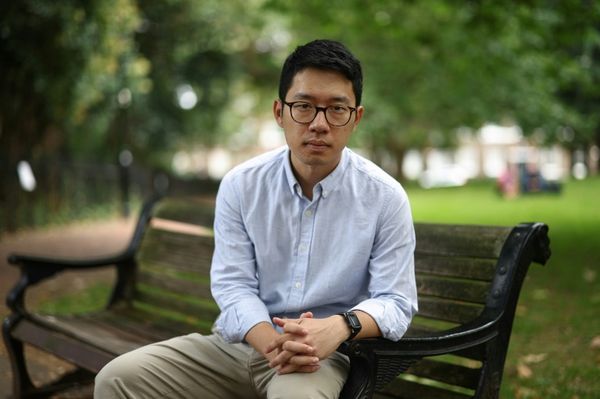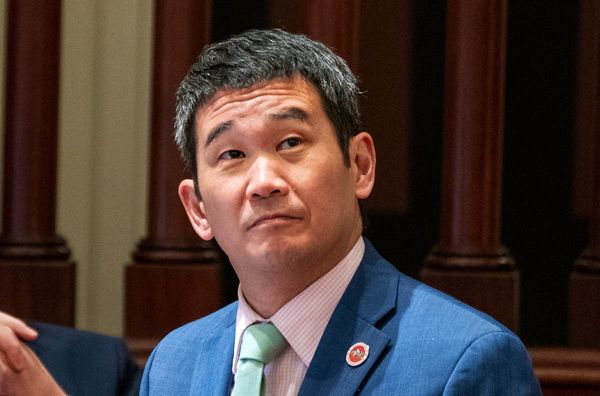
The UN’s weather agency warned this past week the world was now in the grip of an El Niño that would likely see a “surge in global temperatures and disruptive weather and climate patterns” around the planet.
The World Meteorological Organization’s declaration followed that of the US government’s National Oceanic and Atmospheric Administration, which has also said the phenomenon is now set in place in the tropical Pacific.
In Australia, El Niños have tended to increase the risks of drought, heatwaves, bushfires and coral bleaching.
But despite the WMO and Noaa’s confidence, the Bureau of Meteorology is still not convinced an El Niño is in place.
So why the difference of opinion? And if an El Niño does strike, what might be in store?
Why worry about El Niño?
El Niño deserves attention because it influences climates around the globe, from droughts in Australia and Indonesia and failed monsoons in India, to extreme rainfall in the southern US.
There are two key elements of an El Niño. Warmer than average temperatures at the surface in the equatorial Pacific that then kickstart events in the atmosphere.
“The ocean has said we’re ready to go, but the atmosphere hasn’t quite come to the party yet,” says Dr Jaci Brown, research director at CSIRO’s Climate Science Centre.
For the Bureau to declare an El Niño, sea surface temperatures in a central region of the equatorial Pacific (known technically as Nino 3.4) have to be 0.8C above average – a higher threshold than the 0.5C used by Noaa. Both those thresholds have been met.
But Dr Shayne McGregor, an associate professor at Monash University and expert on El Niño and La Niña cycles, says Noaa and the WMO give more weight to ocean temperatures than the Bureau.
“The Bureau wants to see a coupling between the ocean and the atmosphere,” he says. “El Niño is a coupled phenomenon and the impacts are communicated through the atmosphere.”
In WMO’s declaration, the UN agency did say “some uncertainty remains” because the relationship between ocean temperatures and the atmosphere was “only weak”, even though it said this coupling was “crucial for the amplification and sustenance of El Niño”.
During an El Niño, the warmer surface waters disrupt a pattern of winds and updrafts in the Pacific known as the Walker circulation. The trade winds that blow from east to west and form the bottom of this circulation weaken, or even reverse.
To test whether the atmosphere is reacting to the warmer ocean temperatures, the bureau monitors the difference in atmospheric pressure between Tahiti – an island in the central Pacific – and Darwin.
This measure – known as the southern oscillation index – should see persistent higher pressure over Darwin and lower pressure over Tahiti.
Bureau climatologist Zhi-Weng Chua says an SOI of -7 or greater is associated with an El Niño. But while the average over the past 90 days was -5.9, the SOI had jumped back in the most recent 30 days to +3.6.
A network of buoys and satellite datasets also gave information about the Walker circulation.
Chua says: “Even the latest data we have on the trade winds over June shows them close to average. We are seeing no evidence of a signal in the trade winds. They look neutral.”
None of this means an El Niño won’t eventuate, but Chua says it is “unusual” to have such strong warming in the central Pacific without the atmosphere responding.
What if it comes?
McGregor is still on the fence about whether an El Niño will eventuate and points to 2012 and 2014 when the Pacific also looked primed for El Niños that didn’t happen.
“There’s this buildup of heat and it’s pre-conditioned for El Niño. But I’m still 50/50,” he says.
But McGregor and other experts stress the impacts of an El Niño on Australia differ from one event to the next.
He says: “But the chances of a wetter than normal year during an El Niño are almost non-existent. That means you’re left with a normal or drier year.”
Experts have said the impacts on Australia from an El Niño can also depend on where the warmest water in the Pacific is located. Central Pacific El Niños tend to mean drier conditions for Australia than El Niños situated further east.
Brown says no two El Niños are the same, but “they do tell you which way to lean, but not which way to jump”.
Why the uncertainty?
Around the globe, sea surface temperatures have been at record levels since late March. The oceans have absorbed about 90% of the extra heat caused mostly by burning fossil fuels and deforestation.
Last month a study led by CSIRO scientists said global heating had likely been making El Niño and La Niña events more frequent and more extreme since the 1960s.
Brown thinks the changed climate and the extra heat could be interfering with the current conditions in the Pacific, making El Niño harder to predict.
“Climate change means we’re now living in a world we’ve never experienced before and so the rules we have always lived by we don’t know if they still apply,” she says.
“Our understanding of El Niño is based on a different climate state. That’s contributing to the uncertainty of what this year will bring.
“Climate change puts a new lens on everything. Our rules of thumb don’t necessarily apply any more. It takes away some of the certainty that we used to have about how El Niño is formed.
“So a more pressing change is climate change. That means hotter conditions and drier, and then when rainfall does come it’s more intense. We have to prepare for that every year, regardless of El Niño or La Niña.”







